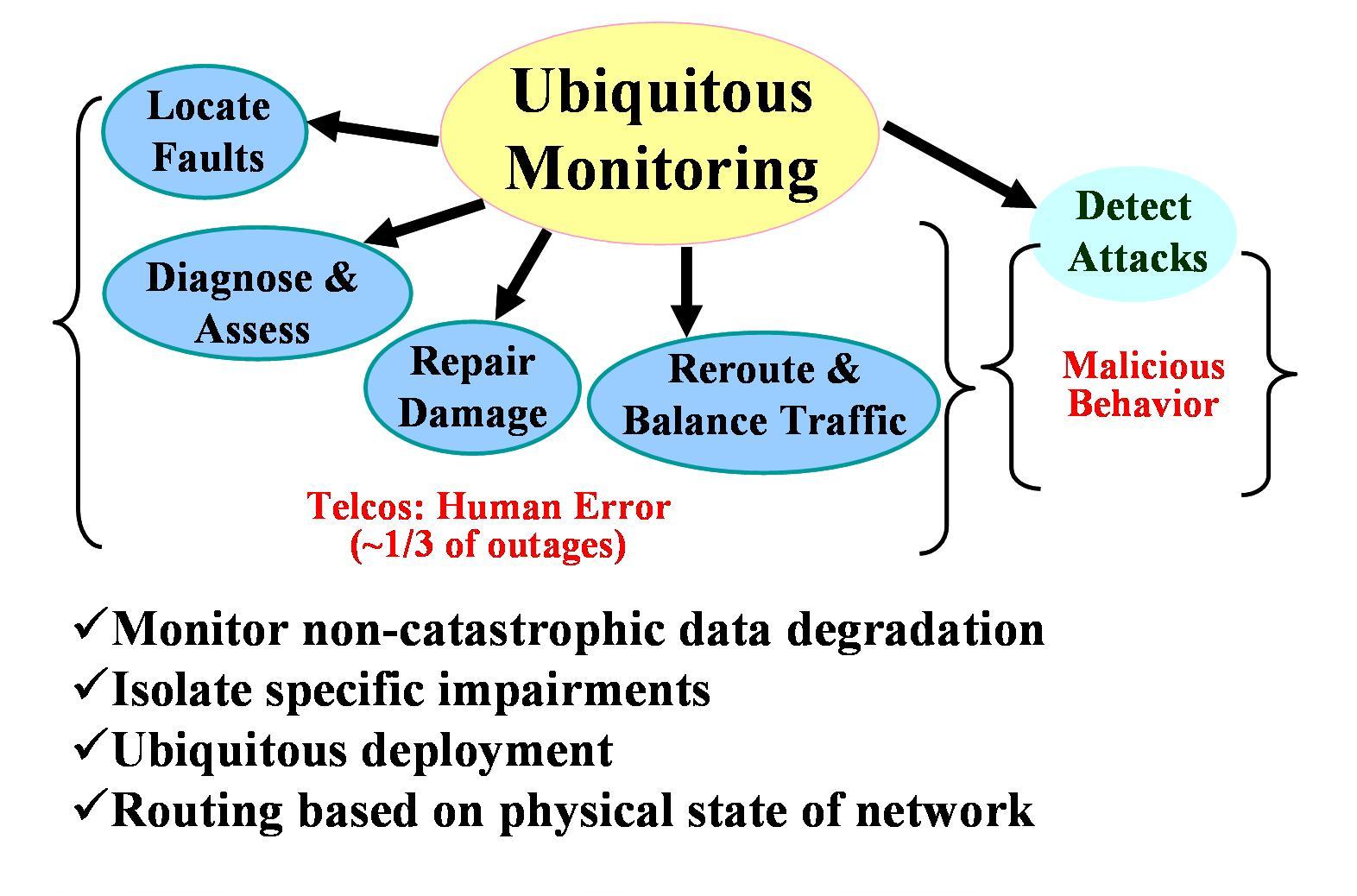|
The optical network must be controlled and managed to within
tight physical-layer tolerances in order to ensure robust operation. As
the network architecture complexity, number of channels, total power and bit
rate increase, its operating range shrinks dramatically. Although current
optical networks function in a fairly static fashion, operating and managing an
existing optical network requires a large amount of person-time. Deployment is
an onerous, labor-intensive task due to the numerous physical-layer system
variables that must be balanced.
This scenario is quite challenging for future
systems, since network paths are not static and channel-degrading effects can
change with temperature, component drift, aging and fiber plant maintenance.
Moreover, we are far from being able to simply plug-and-play an optical node
into an existing network in such a way that the network itself can allocate
physical resources to ensure error-free transport. Desirable features of such a
future self-managed network (i.e., higher stability,
reconfigurability, flexibility, and security) can be enabled by optical
performance monitoring and dynamic physical-layer resource allocation.

Optical performance monitoring should isolate the specific cause
and location of the problem rather than simply sound an alarm. Therefore,
monitors should probably be deployed ubiquitously around the network on each
node. Furthermore, it can be quite advantageous to determine when a data signal
is beginning to degrade, so that the network can take action to correct the
problem or to route the traffic around the degraded area. Some beneficial
features of optical performance monitoring could include:
(i)
Impairment-Aware Routing: Monitoring could provide
valuable information such that routing tables themselves can dynamically reflect
the state of the physical links, the fidelity of the channels, and the
addition/deletion of nodes. This so-called impairment-aware routing would
enable routing tables to be modified based on physical changes, instead of
routing decisions being based primarily on of the fewest hops and shortest
links.
(ii) Security:
Monitoring could provide enhanced security to initiate preventive measures
against denial-of-service either through human error or malicious attack. For
example, the network could be able to find the spatial and spectral locations of
all wanted and unwanted wavelength channels and detect the generation of any
nonlinear mixing products.
(iii)
Format Transparency:
The monitor should be independent of the data format to accommodate a
convergence of different traffic types. This is
because the future network will possibly be used for many applications, for
which each application might have a different set of optimal requirements (i.e.,
modulation formats, data rates, and variable QoS).
| 
